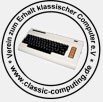The letters have worn off chip 56 on my I/O board (950-008901)- can you check what type of chip is connected to yours please? (No hurry).
My AES is well stowed away at the moment, it would probably take a week.
Take these HiRes photos, they also helped me identify my ROM types.
PIC: https://vintagecomputers.sdfeu.org/aes/pics/fdc_printer.jpg
Site: https://vintagecomputers.sdfeu.org/aes/
According to the photo it's a NE558N Quad Timer
and if you need a new COM2601 USRT with 60! Days Warranty 
 :
:
https://www.ebay.com/itm/20213…f77a5b:g:-q4AAOSw-09aIKyu
PAW I was discussing this on the VCF with Chuck G and he said:
Using a USART chip for an early FDC would not be uncommon. I'll have to go back to my notes on an early 8" AES disk to look at the encoding, but I do recall that the bitstream was USART order, not traditional FDC order. Using asynch I/O would seem to be a horrible waste of resources, however.
Has he made a correct assumption, that the data is stored not in a standard WD1660 style format?
I am convinced that the 8" AES floppy disks have a completely different format and are therefore not comparable with the 5.25" AES floppy disks.
If you look at the explanations of the developer of the FluxENGINE, then even for his assumptions there can only be meant an 8" floppy disk. (77T, 32 Sectors).I think his basis was an image of an 8" floppy disk and according to his investigations it should be an M2FM encoding with bytes written backwards. But maybe we'll find out more when I hold Martin Hepperle s 8" disks in my hand.
The 5,25" Disks on the other hand are FM encoded but PAW knows the details of the 5.25" disks much better.
Here are the explanations from the FluxENGINE page. ...as I said, it has to be 8" because there are no 77T 32Sec 5.25" hard sectored discs.
8080 machines with 32kB of RAM, they ran their own proprietary word
processing software off twin 5.25” drive units, but apparently other software
was available.
The disk format is exceptionally weird. They used 77 track, 32 sector, single
sided hard sectored disks, where there were multiple index holes,
indicating to the hardware where the sectors start. The encoding scheme
itself is MMFM (aka
M2FM), an early
attempt at double-density disk encoding which rapidly got obsoleted by the
simpler MFM — and the bytes are stored on disk backwards. Even aside from
the encoding, the format on disk was strange; unified sector header/data
records, so that the sector header (containing the sector and track number)
is actually inside the user data.

